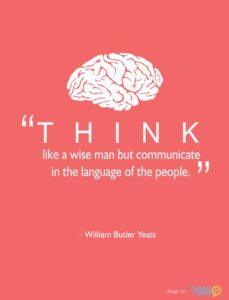 Ever wondered whether you should use “nonprofit” or “non-profit”? If you’re in the U.S. or Canada, the answer is: non-profit.
Ever wondered whether you should use “nonprofit” or “non-profit”? If you’re in the U.S. or Canada, the answer is: non-profit.
With the hyphen.
I confess I’ve never liked the hyphen in there. It looks clunky. Or sloppy. Or something. So I’ve been a long-time fan of the visually tidier “nonprofit”.
Boy oh boy, was I wrong. At least if my goal was to use a term that would make it as easy as possible for people wanting to market their non-profit to find their way to us here at Claxon. (In my defense, if visual tidiness was my goal, I would’ve been totally justified in eschewing the hyphen.)
Here’s the deal: Using Google Trends, we learn that people search for “non-profit” way more than they search for “nonprofits”. Adding that little hyphen ups your search engine results which, in turn, ups your odds of someone making their way to your website.
Now, what if you’re interested in attracting folks abroad? The hyphen/no-hyphen debate isn’t even relevant. That’s because in places like the U.K., they don’t use either “nonprofit” or “non-profit”. Nope. They use “charity”.
In the U.S., the word charity has a somewhat antiquated feel. It conjures up images of Oliver Twist asking in his most adorable little boy voice if he can please, sir, have some more. Charity connotes a hand out, rather than a hand up.
Not so in the U.K. They have charities. Lots and lots of charities!
So if you’re a U.S. organization or Canadian organisation wanting to grab the attention of donors in the U.K., charity is your term of choice.
This handy dandy chart shows which terms are used most often in each geography.
| US | Canada | UK | |
| Nonprofit | 40 | 7 | 1 |
| Non-profit | 100 | 63 | 6 |
| Charity | 23 | 39 | 100 |
The graph below will reinforce that if you have a global audience, your hands-down winner is “charity”.
Post Readability Stats: Reading Ease 69.3, Grade Level 6.4



 I would maintain that thanks are the highest form of thought; and that gratitude is happiness doubled by wonder. ~G.K. Chesterton
I would maintain that thanks are the highest form of thought; and that gratitude is happiness doubled by wonder. ~G.K. Chesterton In the nonprofit world, this is a common scenario: Your small or new organization has an amazing mission that you want everyone to know about. However, you’ve never had a designated marketing person. A volunteer, intern or staff member offers to give it a go. But where do they start?
In the nonprofit world, this is a common scenario: Your small or new organization has an amazing mission that you want everyone to know about. However, you’ve never had a designated marketing person. A volunteer, intern or staff member offers to give it a go. But where do they start?
 I’m often guilty of this: Because I like spicy food, cats and Dostoyevsky so much, when someone tells me they don’t like these things, it doesn’t make sense to me. I think things like, “How can anyone think that bland food tastes better??” and, “But look how cute its little face is!”
I’m often guilty of this: Because I like spicy food, cats and Dostoyevsky so much, when someone tells me they don’t like these things, it doesn’t make sense to me. I think things like, “How can anyone think that bland food tastes better??” and, “But look how cute its little face is!”